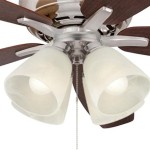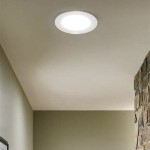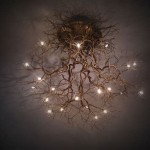Essential Aspects of Light Bulbs For Ceiling Fixtures
When it comes to illuminating your home, light bulbs for ceiling fixtures play a crucial role. These bulbs determine the overall ambiance, functionality, and aesthetic appeal of your living space. Understanding their essential aspects is paramount for making informed decisions that enhance your lighting experience.
This in-depth guide explores the key considerations when choosing light bulbs for ceiling fixtures, ensuring that you select the perfect bulbs for your specific needs.
Light Output and Brightness
Light output, measured in lumens, determines the amount of visible light emitted by a bulb. For general lighting, aim for a brightness of around 800-1000 lumens per 100 square feet of floor space. However, specific areas may require higher or lower light output, depending on their intended use.
Color Temperature
Color temperature, measured in Kelvins (K), refers to the perceived warmth or coolness of light. Warm white bulbs (2700-3000K) create a cozy and inviting atmosphere, while cool white bulbs (4000-5000K) provide a more invigorating and clear light. Consider the desired ambiance and the room's function when selecting a color temperature.
Bulb Shape and Size
Light bulbs come in various shapes and sizes. The most common shapes include A19, BR30, and PAR38. Choose a bulb shape that fits snugly into your fixture and provides the desired beam spread. Ensure that the bulb's diameter and length are compatible with your fixture's requirements.
Socket Type
Light bulbs are designed to fit specific socket types. The most common socket types for ceiling fixtures are E26 (medium base) and GU10 (bi-pin base). Verify the socket type of your fixture before selecting a bulb to ensure a secure fit.
Lifespan and Efficiency
Lifespan, measured in hours, indicates how long a bulb is expected to last before burning out. Energy efficiency, measured in watts, refers to the amount of energy consumed by a bulb to produce a certain light output. Consider bulbs with longer lifespans and higher energy efficiency to save money on replacements and electricity costs.
Dimmability
Dimmable light bulbs allow you to adjust the brightness of your lighting. This feature provides greater flexibility and allows you to create different lighting moods based on your needs. Ensure that your chosen bulb is compatible with the dimmer switch in your circuit.
Other Considerations
In addition to the essential aspects mentioned above, other factors may influence your choice of light bulbs for ceiling fixtures. These include brand reputation, price, special features (e.g., smart bulbs), and the style of the fixture itself. Consider these factors when making your selection to ensure a well-rounded lighting solution.

A Guide To Light Bulb Sizes Types Shapes And Codes

Diffe Types Of Led Ceiling Lamps For Your Home Chint Blog

Lighting Guide How To Choose The Right Light Bulb For Each Lamp

Lighting Guide How To Choose The Right Light Bulb For Each Lamp
Our Guide To Light Bulb Types Fittings Argos

How To Choose A Light Bulb For Your Ceiling Fan

Light Sources Explained Lighting 101 Factorylux

The New Look In Ceiling Lights Hanging Light Bulb Fixtures Ideas Advice Lamps Plus

Led Church Lighting Commercial Lights

Make Your Home Lively With These Ceiling Lights Beautiful Homes
Related Posts








